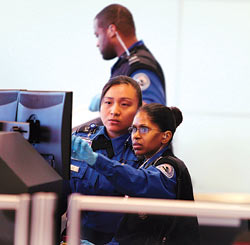INDIAN ARMED FORCES CHIEFS ON OUR RELENTLESS AND FOCUSED PUBLISHING EFFORTS

The insightful articles, inspiring narrations and analytical perspectives presented by the Editorial Team, establish an alluring connect with the reader. My compliments and best wishes to SP Guide Publications.

"Over the past 60 years, the growth of SP Guide Publications has mirrored the rising stature of Indian Navy. Its well-researched and informative magazines on Defence and Aerospace sector have served to shape an educated opinion of our military personnel, policy makers and the public alike. I wish SP's Publication team continued success, fair winds and following seas in all future endeavour!"

Since, its inception in 1964, SP Guide Publications has consistently demonstrated commitment to high-quality journalism in the aerospace and defence sectors, earning a well-deserved reputation as Asia's largest media house in this domain. I wish SP Guide Publications continued success in its pursuit of excellence.
- Indian Air Force Aims for Full Indigenous Inventory by 2047 — Air Chief Marshal A.P. Singh
- General Upendra Dwivedi takes over as the Chief of the Army Staff
- Rajnath Singh assumes charge as Defence Minister for the second consecutive term
- Admiral Dinesh K. Tripathi assumes Command of the Indian Navy as 26th Chief of the Naval Staff
- Prime Minister witnesses 'Bharat Shakti' – a Tri-Services Firing and Manoeuvre Exercise in Pokhran, Rajasthan
TSA's behavioural detection programme questioned

The United States Transportation Security Administration (TSA) has spent roughly $1 billion training thousands of “behaviour detection officers” as part of the Screening of Passengers by Observation Techniques (SPOT) programme.
The purpose of SPOT is to identify facial and body expressions that signals terrorist activity. Psychologists – and the GAO – question the effectiveness of the programme. “The common-sense notion that liars betray themselves through body language appears to be little more than a cultural fiction,” says one psychologist.
The results have not been impressive: fewer than one per cent of the more than 30,000 passengers a year who are identified as suspicious end up being arrested, and the offenses have not been linked to terrorism.
A November 2013 report by the Government Accountability Office (GAO) recommended that the TSA should reduce future funding for the agency’s behavioural detection programme because there is little evidence of the programme’s effectiveness. According to the GAO, “available evidence does not support whether behavioural indicators, which are used in the SPOT, can be used to identify persons who may pose a risk to aviation security.”
The recommendation was supported by a survey in which psychologists Charles Bond and Bella DePaulo analysed more than 200 studies in which participants correctly identified 47 per cent of lies as deceptive and 61 per cent of truths as nondeceptive, resulting in an average of 54 per cent — only 4 per cent better than chance. Accuracy rates were lower in experiments when judgement had to be made relying solely on body language.
Researchers have found that the best clues to recognising liars are verbal clues. Dr Nicholas Epley, a professor of behavioural science at the University of Chicago, has found that people over-rely on reading facial expressions. “Reading people’s expressions can give you a little information, but you get so much more just by talking to them,” he says. “The mind comes through the mouth.”





